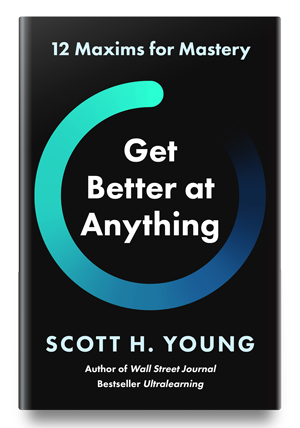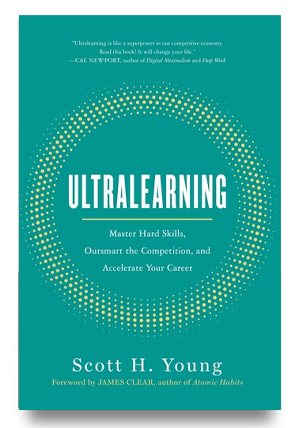At the start of this month, I shared some reflections on my poor organizational skills, and how I’d generally like to be a tidier person. Today, I’d like to share a little bit about how my efforts at getting organized went, as well as some ideas from the five books I read this month on the topic.
Those interested can also read my updates from the previous ten foundations I covered: fitness, productivity, money, food, reading, outreach, sleep, reflection, connection and focus.
Quick Summaries of This Month’s Reading
The books I read this month were:
- The Life-Changing Magic of Tidying Up. Pretty much the go-to book on tidying. I found her strategy worked, but, as I’ll discuss, it’s also intensive.
- Stuff: Compulsive Hoarding and the Meaning of Things. A fascinating deep-dive into the psychology of people who collect too much stuff and why it remains incredibly hard to treat.
- How to Keep House While Drowning. An antidote to the poisonous idea that if your home isn’t perfectly tidy at all moments, you’re a failure in life. The author has good tips for how to keep your place functional, even when life circumstances make cleaning up feel like an impossible chore.
- Happy by Design. A book on how lighting, decor, plants, access to nature, and good architecture can promote well-being.
- Wellness by Design. A design book for cultivating a space that is healthy and health-promoting.
3-Minute Summary of What I Learned
While this month was less research-intensive than others, I learned a lot about staying organized from both my reading and my intensive decluttering (more on that later). Here’s what I took away from this month of organizing:
- Toss first, store later. Difficulties with staying tidy are largely due to having too much stuff. If you start with trying to sort or store things, you’ll switch away from asking the difficult question: “Do I really need this?”
- When in doubt, throw it out. “Keep everything that might be useful” sounds like a good maxim, but it results in keeping a ton of junk that you’ll never actually use.
- Organize by category, not place. Sort your clothes, not your closet. You can’t get a full understanding of what you own unless everything belonging to a category is put in the same place.
- Keep everything of the same category in the same place. Having multiple storage locations for the same kind of object increases the cognitive burden of knowing where to put things. This matters more than the physical effort of walking a bit farther to access something or put it away.
- Store less than you can fit. Totally full containers make it hard both to access things and to put them away. This increases the effort you need to maintain organization.
- Store things so you can easily see them. Try to keep things as vertical as possible in their space rather than stacking them on top of each other, so, for instance, you can easily see the contents of a drawer by opening it.
- Boxes, boxes, boxes. Subdividing large spaces by using square boxes without lids prevents small items from scattering across larger containers and helps keep everything visible.
- Most paperwork is garbage. Most of the mail you get is garbage and should be thrown out as soon as you look at it. This includes bills that have been paid, receipts for things you can’t return, bank statements and random letters. Only a handful of documents need to be preserved.
- Give everything a home. Every object you keep should have one, and only one, place it goes when you put it away.
- It will get worse before it gets better. Getting tidier, ironically, generally involves getting a lot messier first. For much of the month, my house had bags for donation, recycling, and garbage crowding the floor, as well as loose items that remained unprocessed strewn about. This can feel dispiriting because it looks like you’re moving away from being tidier. However, if you trust the process, the end result is that each organized space becomes much easier to maintain.
Personal Reflections on This Month’s Decluttering
This month ended up being the hardest month of the project so far.1
My original plan to take a few days off to complete the initial declutter turned out to be wildly optimistic. It took the entire month, working in the little chunks of time I could find between work and family, to go through all of my things. Even then, I wasn’t able to go through all the kids’ stuff—so the decluttering work is not completely finished.
Still, I’m happy with the progress I’ve made so far. My clothes, books, kitchen, bathroom, documents and hobby stuff are all well-organized. My office is clutter-free for the first time, as are my nightstand, bookshelf, closet and bathroom.
Already, I can tell that the new setup will be much easier to maintain than my old organizational system. While there’s always some work needed to keep things tidy (especially with small kids at home), when the spaces where you put things are well-organized and everything has a place it belongs, the effort becomes much less.
Putting things away has always been a bit of a sore spot for me. I realize now the deeper problem was that many objects did not have a designated spot, and when they did, that spot was often jam-packed and thus couldn’t easily accommodate another item.
I also realize that I need to be more aggressive about throwing things out. A pattern I’ve noticed is that when I would buy a replacement for an old pair of jeans, a backpack, a spatula or a frying pan, I would keep the item I was replacing with the idea that the older one might be useful as a backup. But this results in too much stuff and makes it impossible to maintain things in an organized state.
Will the changes I’ve implemented last? Or will I backslide to a messier state? It’s hard to say for certain, but I hope that if entropy does eventually win out, I will be able to repeat the process I used this month in a targeted manner to bring things back to a more organized state.
_ _ _
That’s all for today. Next week, I’ll share my reflections on starting the twelfth and final month of the project: service.


 I'm a Wall Street Journal bestselling author, podcast host, computer programmer and an avid reader. Since 2006, I've published weekly essays on this website to help people like you learn and think better. My work has been featured in The New York Times, BBC, TEDx, Pocket, Business Insider and more. I don't promise I have all the answers, just a place to start.
I'm a Wall Street Journal bestselling author, podcast host, computer programmer and an avid reader. Since 2006, I've published weekly essays on this website to help people like you learn and think better. My work has been featured in The New York Times, BBC, TEDx, Pocket, Business Insider and more. I don't promise I have all the answers, just a place to start.